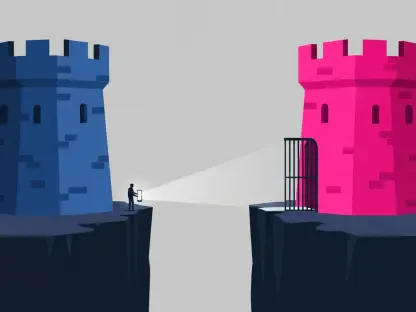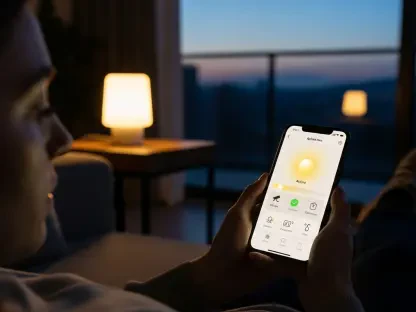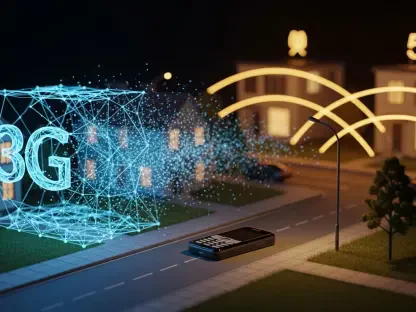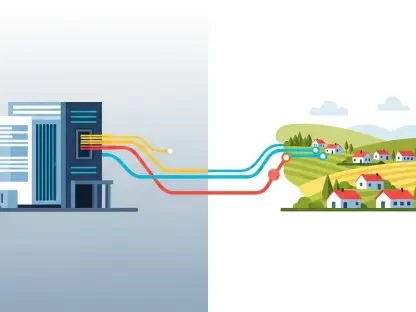Imagine a life-threatening emergency unfolding in a remote corner of Australia, where every second counts, and the nearest help is miles away—dialing Triple Zero (000) becomes the lifeline that could make all the difference between survival and tragedy. For many Australians, making this call is a fundamental skill taught from childhood, yet the intricate process behind connecting that call to emergency services remains a mystery to most. Far from a simple phone connection, the journey of a Triple Zero call involves multiple technical steps, regulatory oversight, and potential points of failure, as tragically demonstrated by recent outages with fatal consequences. This article delves into the complex mechanism of Triple Zero calls, exploring how they are initiated, routed, and responded to, while also addressing the challenges that can disrupt this critical service. With insights from telecommunications expertise, the following sections break down the process, highlight vulnerabilities, and look ahead to improvements aimed at ensuring no call for help goes unanswered.
1. Understanding Federal Oversight of Emergency Services
The foundation of Australia’s emergency call system rests on federal governance, which ensures that telecommunications infrastructure supports critical services like Triple Zero. The Australian government holds responsibility for setting national standards and regulations that govern Emergency Call Services, the formal name for Triple Zero. This oversight is crucial to maintain consistency and reliability across diverse regions, from bustling cities to remote outbacks. The legal framework established by the government dictates how telecommunication providers must prioritize and facilitate emergency communications, ensuring that every call has the best chance of reaching help. Without this centralized authority, the system could fragment, leaving gaps in service that could cost lives. The role of legislation is not just administrative but a lifeline that binds the nation’s emergency response capabilities into a cohesive network, adaptable to technological advancements and emerging challenges.
A key player in this framework is the Australian Communications and Media Authority (ACMA), which acts as the regulatory watchdog for Triple Zero operations. Under Part 8 of the Telecommunications (Consumer Protection and Service Standards) Act 1999, ACMA monitors compliance, enforces standards, and addresses issues that could jeopardize emergency call functionality. This body ensures that carriers and service providers adhere to strict guidelines, from maintaining network coverage to handling call routing with precision. ACMA’s role extends to investigating outages and mandating corrective actions, as seen in responses to recent network failures. By holding telecommunication companies accountable, ACMA helps safeguard the integrity of a system that millions rely on during their most desperate moments. This regulatory oversight is a critical layer of protection, aiming to minimize disruptions and ensure that emergency calls connect seamlessly to the appropriate responders, regardless of location or network conditions.
2. Breaking Down the Triple Zero Call Process
The process of making a Triple Zero call begins with the simple act of dialing 000 or the international emergency number 112, a step familiar to most Australians from an early age. For those with speech or hearing impairments, the 106 text-based service, facilitated by the National Relay Service, offers an alternative means to seek help. Notably, no SIM card or active mobile plan is required to place this call, but network coverage is essential. Mobile devices connect to nearby towers using radio waves within designated frequency bands, transforming these signals into digital data transmitted via optic fibers or other methods. If a user’s primary provider lacks coverage, the phone may display “Emergency calls only” and utilize another network through a process known as “camp-on.” However, this workaround isn’t foolproof, as demonstrated by recent disruptions where system upgrades blocked such alternate routing, leaving callers stranded in critical moments.
Once connected, the call routes to Telstra, Australia’s designated emergency call service operator, which manages the intricate system linking telecommunication networks to state and territory emergency organizations. At one of Telstra’s nationwide call centers, trained operators answer, quickly assess the nature of the emergency, and transfer the caller to the appropriate service—be it ambulance, fire, or police. From there, specialized personnel take over, dispatching response teams to the scene with urgency. Yet, challenges persist, especially in the vast 5 million square kilometers of Australia without mobile coverage, where no call can be made. Past incidents, like the November 2023 national network outage and a more recent fatal disruption due to a targeted system failure, underscore the fragility of this process. Each step, from initiation to dispatch, must function flawlessly, as even a minor glitch can have devastating consequences in an emergency.
3. Addressing Challenges and Systemic Vulnerabilities
Recent events have cast a harsh spotlight on the vulnerabilities within the Triple Zero system, particularly with network outages that have had tragic outcomes. A notable instance involved a major telecommunications provider whose system upgrade specifically impacted the emergency call network, preventing calls from routing to alternative providers and resulting in fatalities. Another significant disruption in November 2023 saw a complete national network failure, though fortunately without loss of life. These incidents reveal how even targeted technical issues can cripple access to emergency services, exposing gaps in redundancy and failover mechanisms. Such failures are not merely technical inconveniences but critical lapses that undermine public trust in a system meant to be infallible during life-or-death situations. Addressing these weaknesses requires both immediate fixes and long-term strategies to bolster reliability.
Beyond technical failures, geographical coverage remains a formidable barrier to equitable emergency access across Australia. With millions of square kilometers lacking mobile network coverage, vast swaths of the population, particularly in remote and regional areas, are cut off from Triple Zero services. This gap is especially perilous during natural disasters like floods or bushfires, when communication is vital for survival. The absence of coverage isn’t just a rural issue; it affects travelers and workers in isolated areas who may find themselves helpless in an emergency. Tackling this challenge demands innovative solutions and substantial investment in infrastructure to extend network reach. While temporary measures like satellite phones exist, they are not universally accessible. The stark reality of these coverage limitations highlights the urgent need for systemic improvements to ensure that no Australian is left beyond the reach of emergency help.
4. Looking Ahead to Enhancements in Emergency Communications
In response to past failures, significant steps are being taken to fortify the Triple Zero ecosystem, starting with the introduction of a dedicated custodian role. Following a comprehensive review of the November 2023 outage, the federal government has proposed legislation to establish this overseer, tasked with monitoring the end-to-end performance of the emergency call system. The custodian will have the authority to demand critical data from telecommunication providers, enabling proactive identification of risks and swift action during disruptions. This legislative move, recently introduced to parliament, aims to create a centralized point of accountability, ensuring that the system operates with maximum efficiency. By fostering greater transparency and responsiveness, this role could prevent future outages from escalating into crises, offering a robust safeguard for a service that must never fail.
Technological innovation also promises to revolutionize access to Triple Zero services, particularly through direct-to-device mobile technology leveraging Low Earth Orbit satellites. This advancement, currently under development, will enable emergency calls even in areas devoid of traditional mobile coverage, a game-changer for remote and regional communities. Alongside this, recent amendments to the Telecommunications Act 1997 have strengthened consumer protections by imposing stricter obligations on mobile operators. Additionally, draft legislation released last month proposes a universal outdoor mobile obligation, compelling providers to ensure reasonable coverage across Australia. Within the coming years, these combined efforts—ranging from satellite connectivity to expanded network mandates—should ensure that every Australian, regardless of location, can reach emergency services when it matters most, marking a significant leap forward in national safety.
5. Reflecting on Progress and Next Steps for Safety
Looking back, the Triple Zero system proves to be a complex web of technology and coordination, with each link in the chain vulnerable to disruption, as past outages painfully illustrated. Incidents that left callers unable to connect with emergency services underscored the dire consequences of technical failures and coverage gaps. These events served as stark reminders that even a well-designed system requires constant vigilance and adaptation to meet the demands of a vast and varied nation. The response from authorities and industry players highlighted a shared recognition of the need for resilience, prompting actions that addressed both immediate flaws and systemic shortcomings. Reflecting on these challenges revealed the critical importance of a reliable emergency communication network as a cornerstone of public safety.
Moving forward, the path to enhancing Triple Zero services lies in sustained commitment to innovation and oversight. Stakeholders must prioritize the rollout of satellite-based solutions to bridge coverage gaps, ensuring that remote areas are no longer isolated from help. Equally vital is the enforcement of legislative measures, such as the custodian role, to maintain accountability and responsiveness within the telecommunications sector. Australians deserve assurance that dialing 000 will always yield a response, no matter the circumstances. By investing in infrastructure, embracing cutting-edge technology, and refining regulatory frameworks, the nation can build an emergency call system that stands as a model of reliability. These steps, if executed with urgency, promise to transform past vulnerabilities into a stronger, more inclusive safety net for all.









